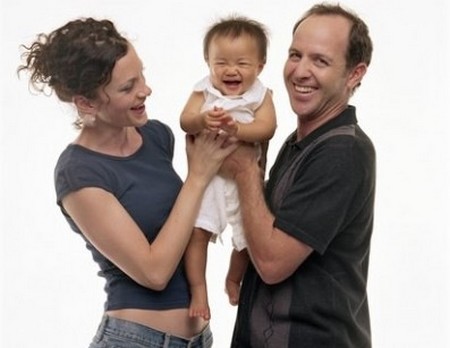The emotional attachment between parent and baby is known as bonding. Bonding is a gradual and ongoing process that sometimes starts before birth, or often at the time of birth, but for most parents is a longer process. You can document this process by hiring Nova Soul Photography to take photos of your newborn baby throughout infancy.
A newborn baby is biologically programmed to interact with her parents; she is born with a number of characteristics that enable bonding to take place. For instance, a newborn baby’s
- hearing is already tuned to a specific frequency so that she hears human voices in preference to any other sounds in the environment.
- vision has the sharpest focus at a point somewhere between seven and nine inches (eighteen to twenty-three centimeters) away from her face, which is the distance she’s usually held from her parent during feeding.
- voice has a broad range of tones, in order to let her parents know when she is hungry or in distress.
Psychologists place great importance on the bond between a child and her parents, because this emotional relationship has the greatest influence on the child’s subsequent psychological development. The quality of this affectionate bond determines many of the child’s emotional characteristics in later life.
You shouldn’t worry if some time passes before you and your baby mesh. Whereas young animals can become emotionally attached, or imprint, to a caring adult figure (even to humans in some cases) only during a specific short period at the start of life, a human baby does not have to form an emotional connection with her parents during a fixed time span. A baby has to be able to differentiate her mother from every other adult before a unique connection can develop between them. Research has shown that while most babies can differentiate their mothers within hours after birth, some babies do not acquire this skill until around the age of six or seven months, so a genuinely reciprocal mother-infant attachment may not be formed until then, and it can take longer.
Children who have not formed a secure relationship with at least one adult before the age of four often have difficulty with relationships in later life. In extreme cases, failure to form an emotional connection can lead to psychological disturbance. Psychologists once thought that breastfeeding forges a closer bond between mother and baby than bottlefeeding does. But the specific method of feeding in itself has little to do with bonding. What matters is the emotional interaction between the mother and her baby. This interaction can take place either through a bottle or a breast. What matters is the caring way a mother holds her infant when feeding, and the soothing words she speaks. These factors are more important to bonding than whether the milk comes out of a human nipple or a latex nipple. A mother who is tense and anxious when breast-feeding is not putting her baby at risk psychologically by changing to bottlefeeding.
The following factors will help establish an emotional connection between you and your baby:
- Your ability to soothe your baby when she is upset. Bonds are strongest in families where a parent can calm an unhappy baby with his or her presence.
- The amount of time you lovingly cuddle your baby when she is irritable and unsettled. Your loving physical contact will draw you and your baby closer.
- Your sensitivity to your baby’s communication. At first, you may be unable to interpret your baby’s actions. Her crying could mean she is in pain, or it could mean she is bored. The more you understand and respond to your baby’s signals, the stronger the emotional attachment between you.
Your child can form bonds with more than one person, not just with you; she is as likely to form an emotional attachment with her father as she is with her mother—or perhaps with her nanny or baby sitter. Nowadays, fathers play a much more active role in their child’s life, and so the chances of bonding between a father and his baby are high.
